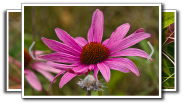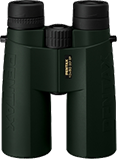native ash borer
(Agrilus subcinctus)
Conservation • Description • Habitat • Ecology • Distribution • Taxonomy
|
|
||||||||||||||
Description |
Native ash borer is a small metallic wood boring beetle. As suggested by the common name, it is native to North America. It occurs in the United States east of the Great Plains. It also occurs in southern Ontario Canada. Native ash borer is considered a secondary pest of ash trees. Emerald ash borer (EAB) infests and kills healthy ash trees even those that are vigorous. Native ash borer infests ash trees that are already dead or severely stressed. The larvae develop in the phloem tissue. The presence of EAB, which causes widespread ash mortality, creates an abundance of suitable host material (recently dead trees) for native ash borer. The population of native ash borer will peak one or two years after the population of EAB peaks. It is then expected to decline once the ash trees have been dead two or more years, because no phloem tissue remains to support larval development. Adults are most active in Michigan from late May to early July, but all records in Minnesota are from May 23 to June 15. They are found in deciduous forests and woodlands, in parks, and in urban and residential areas, anywhere ash trees are found. Information on the biology of native ash borer is limited. Adults are known to feed on the leaves of ash trees, but they have also been observed on hickory, Kentucky coffeetree, eastern poison oak, and privet. The larvae are known to develop in twigs of ash trees, but one author believed poison ivy was the host, and another reported privet as the host. Adults are small. They can be ⅛″ to 3⁄16″ (3 to 5 mm) in length, but they are usually less than 4 mm in length. The body is somewhat bullet-shaped, rigid, narrow, elongate, and slightly flattened. It is coppery brown with metallic reflections. The amount of metallic reflection varies with the angle and strength of the light, so that the overall color can change as the observer shifts positions. The head is flat and it is slightly tucked beneath the first segment of the thorax (prothorax). The eyes are kidney shaped. The antennae are short and have 11 segments. Segments 1 through 4 are cylindrical. Segments 5 through 11 are sawtoothed. The mouthparts are projected downward. On the male the face is dark green. The upper plate covering the prothorax (pronotum) is wider than long. There is no ridge (prehumeral carina) in the shoulder region. The wing covers (elytra) are slightly narrowed before the middle and tapered beyond the middle toward the tips. The tips are separated, broadly rounded, and finely toothed. Toward the tip the inner margins are slightly elevated. They are colored like the pronotum and there is a distinctive pattern of spots of grayish scale-like hairs on the basal half and near the tip. This is the feature that gives the beetle part of its scientific name. The species epithet “subcinctus” is derived from Latin and means “partially girdled” or “somewhat banded.” On the male, the fourth segment (tibia) on the front and middle legs has a tooth at the tip. |
Size |
Total length: ⅛″ to 3⁄16″ (3 to 5 mm) |
Similar Species |
Habitat |
Deciduous forests and woodlands, parks, urban and residential areas |
Ecology |
Season |
May to early July |
Behavior |
|
Life Cycle |
The female lays eggs on recently dead ash twigs. The larvae bore into the twigs and develop in the phloem tissue. |
Larva Hosts |
Ash trees |
Adult Food |
Leaves of ash trees |
Distribution |
||
|
Sources Biodiversity occurrence data published by: Minnesota Biodiversity Atlas (accessed through the Minnesota Biodiversity Atlas Portal, bellatlas.umn.edu, 6/8/2025). |
|
| 6/8/2025 | ||
Occurrence |
||
|
||
Taxonomy |
|
Order |
Coleoptera (Beetles) |
Suborder |
Polyphaga (Water, Rove, Scarab, Long-horned, Leaf, and Snout Beetles) |
Infraorder |
Elateriformia |
Superfamily |
Buprestoidea |
Family |
Buprestidae (jewel beetles) |
Subfamily |
Agrilinae |
Tribe |
Agrilini |
Subtribe |
Agrilina |
Genus |
|
Subgenus |
|
Subordinate Taxa |
|
|
|
Synonyms |
|
|
|
Common Names |
|
encircled borer native ash borer |
|
Glossary
Carina
An elevated keel or ridge.
Elytra
The hardened or leathery forewings of beetles used to protect the fragile hindwings, which are used for flying. Singular: elytron.
Pronotum
The exoskeletal plate on the upper side of the first segment of the thorax of an insect.
Prothorax
The first (forward) segment of the thorax on an insect, bearing the first pair of legs but not wings.
Tibia
The fourth segment of an insect leg, after the femur and before the tarsus (foot). The fifth segment of a spider leg or palp. Plural: tibiae.
Visitor Photos |
||
Share your photo of this insect. |
||
This button not working for you? |
||
Alfredo Colon |
 |
MinnesotaSeasons.com Photos |
||
|
||
|
||

Slideshows |
|

Visitor Videos |
||
Share your video of this insect. |
||
This button not working for you? |
||
|
Other Videos |
||
|

|
Created: 6/8/2025 Last Updated: © MinnesotaSeasons.com. All rights reserved. |


